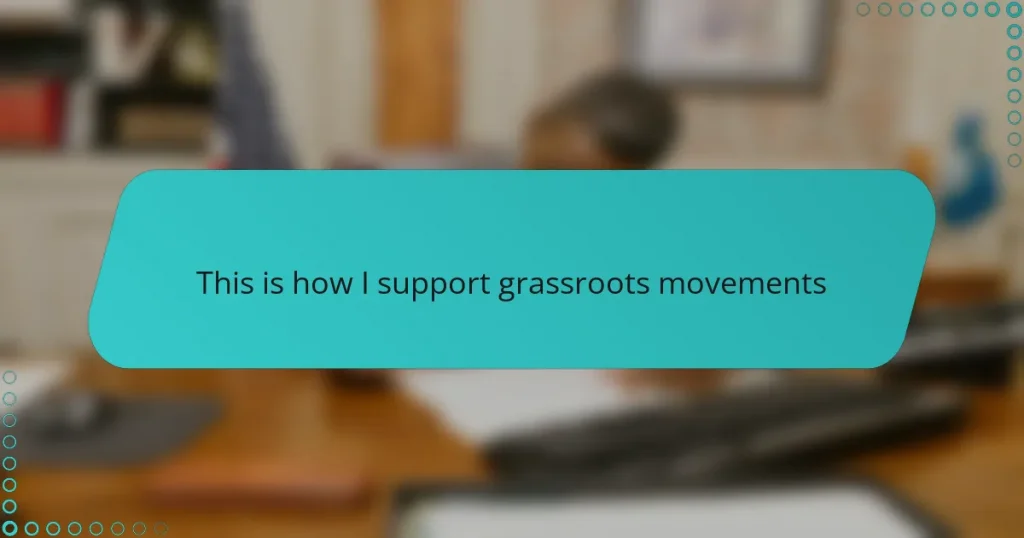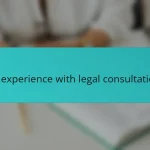Key takeaways
- Legal advocacy empowers grassroots movements by helping activists navigate legal systems and protect their rights.
- Building effective legal support networks requires diverse collaboration and ongoing training to strengthen movements and create resilience.
- Personal experiences in advocacy resonate deeply, fostering connection and trust among activists and legal professionals.
- Measuring impact through clear goals and combining data with storytelling enhances engagement and sustains support for movements.
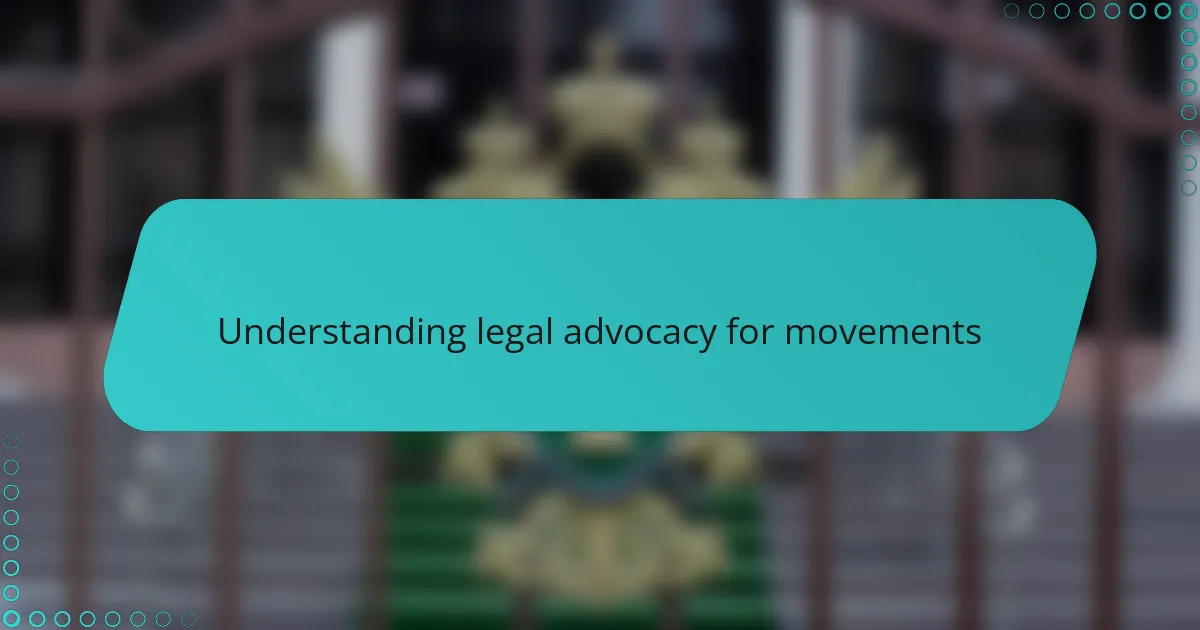
Understanding legal advocacy for movements
Legal advocacy is the backbone of many grassroots movements, providing the tools and knowledge to challenge unjust laws. Have you ever wondered why some movements gain traction while others falter? From my experience, it’s clear that understanding legal frameworks empowers activists to protect their rights and amplify their voices effectively.
When I first got involved, I realized that knowing how to navigate legal systems was like having a flashlight in a dark tunnel. Without this guidance, even the most passionate efforts can get lost or suppressed. It’s not just about legal jargon; it’s about using the law as a shield and a sword to create real change on the ground.
Ultimately, legal advocacy is not an abstract concept but a practical, lived experience. It demands patience, resilience, and strategic thinking, yet it offers the hope that grassroots movements can shape policies and hold power accountable. What’s more inspiring than seeing communities rise empowered through legal knowledge? I find that deeply motivating every step of the way.
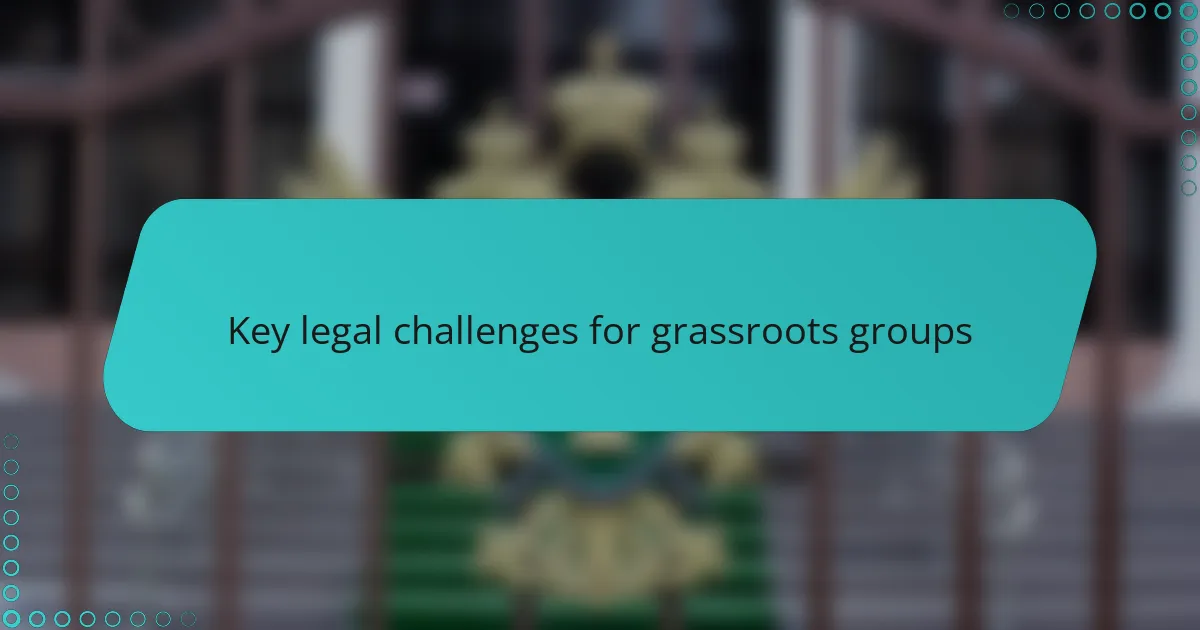
Key legal challenges for grassroots groups
One of the biggest hurdles grassroots groups face is the sheer complexity of legal procedures. I’ve seen passionate organizers overwhelmed by paperwork and court deadlines, which can feel like an impossible maze. It begs the question: how can movements maintain momentum when the legal system isn’t designed with them in mind?
Another challenge is access to affordable legal expertise. When I first supported a local campaign, finding lawyers who understood both the law and the community’s needs was tough. This gap often leaves groups vulnerable or hesitant to take action, despite their strong convictions.
Lastly, there’s the risk of retaliation or legal intimidation. I’ve witnessed activists hesitate to speak out, fearing lawsuits or arrests meant to silence them. It’s heartbreaking because this tactic can drain the energy and spirit that fuel grassroots change. How do we protect those who bravely challenge injustice?
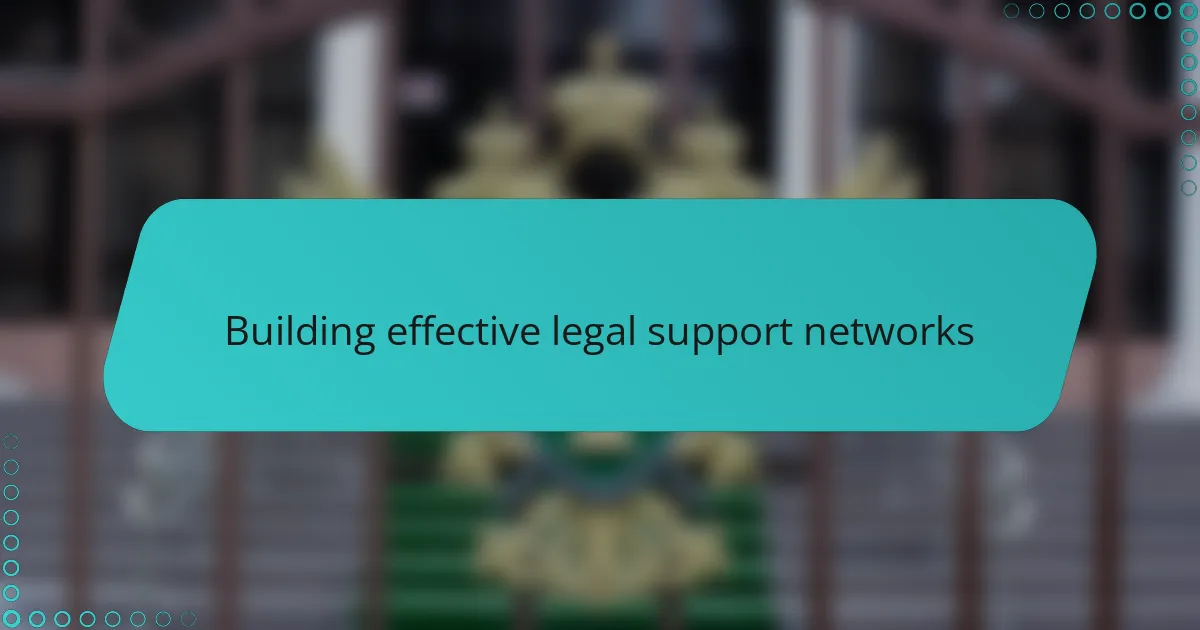
Building effective legal support networks
Building effective legal support networks starts with connecting the right people—lawyers who truly understand grassroots struggles and activists who are eager to learn. When I helped set up such a network once, I noticed how bridging those gaps created a shared sense of purpose and trust that no textbook could teach. Have you ever felt that spark when a legal mentor genuinely listens and walks alongside a movement? That connection makes all the difference.
I’ve also found that diversity within these networks strengthens their impact. Including paralegals, community leaders, and even sympathetic officials creates a safety net for everyone involved. It’s not just about individual expertise; it’s about crafting a web of support that cushions activists from isolation and legal pitfalls. Isn’t it reassuring to know you’re part of a collective that stands ready when the pressure mounts?
Finally, maintaining open communication and ongoing training is vital. In one campaign I supported, regular workshops kept everyone informed and prepared, turning legal complexity into manageable steps. This approach doesn’t just empower individuals; it builds resilience across the entire movement. How often do we underestimate the power of steady, informed support until we face a crisis? From what I’ve seen, consistent legal education can be the game-changer that sustains grassroots energy over the long haul.
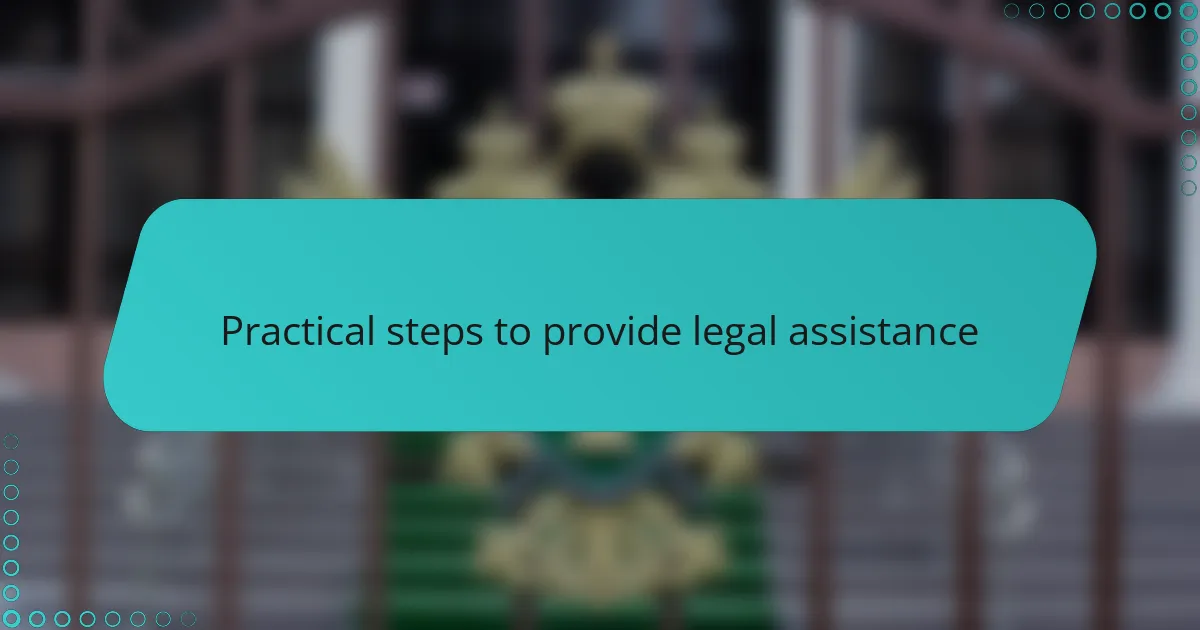
Practical steps to provide legal assistance
One practical step I always take is offering direct legal consultations tailored to the movement’s specific needs. When I sat down with a local group once, breaking down complex legal terms into everyday language sparked a newfound confidence among them. Have you noticed how just understanding the basics can shift someone from feeling powerless to ready to take action?
Securing pro bono legal services is another crucial move. I recall partnering with law firms willing to volunteer their time, which made a world of difference during pressing legal battles. It makes me wonder: how often do grassroots movements miss out on such resources simply because they don’t know to ask?
Lastly, I prioritize creating clear, accessible legal toolkits that activists can use independently. These guides, developed from real cases I’ve worked on, serve as ready references when quick decisions are needed. Isn’t it empowering when you have legal support literally at your fingertips?
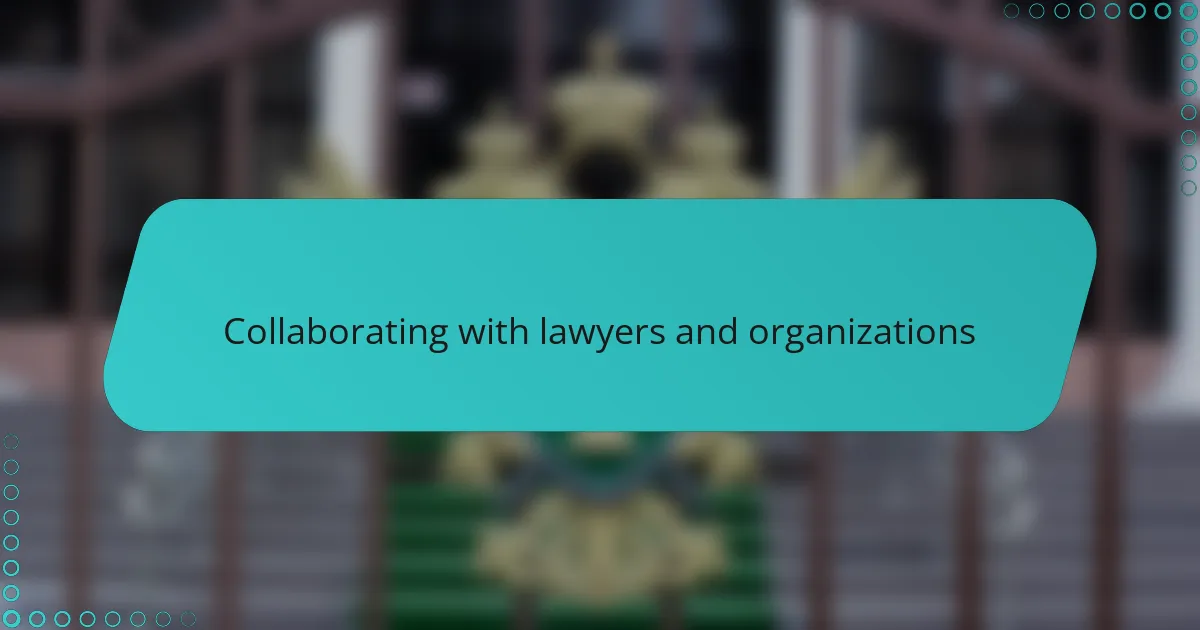
Collaborating with lawyers and organizations
Collaborating with lawyers and organizations often feels like unlocking a new level of strength for grassroots movements. I remember working alongside a small community group where partnering with a dedicated legal aid organization didn’t just provide expertise—it forged a bond that lifted the entire movement’s morale. Have you ever experienced how a trusted legal partner can transform uncertainty into confidence?
From my experience, it’s crucial to choose collaborators who share the movement’s values and goals. I once saw a mismatch between a legal team and activists lead to frustration and missed opportunities, which taught me that alignment goes beyond professional skills; it’s about trust and shared commitment. Isn’t it striking how even legal advocacy needs emotional intelligence to be truly effective?
What also stands out to me is the power of ongoing collaboration rather than one-off consultations. When legal advice becomes part of the movement’s rhythm—through workshops, joint strategy sessions, or regular check-ins—it creates a living support system. How often do we overlook that steady, day-to-day partnership is what sustains movements through their toughest moments?
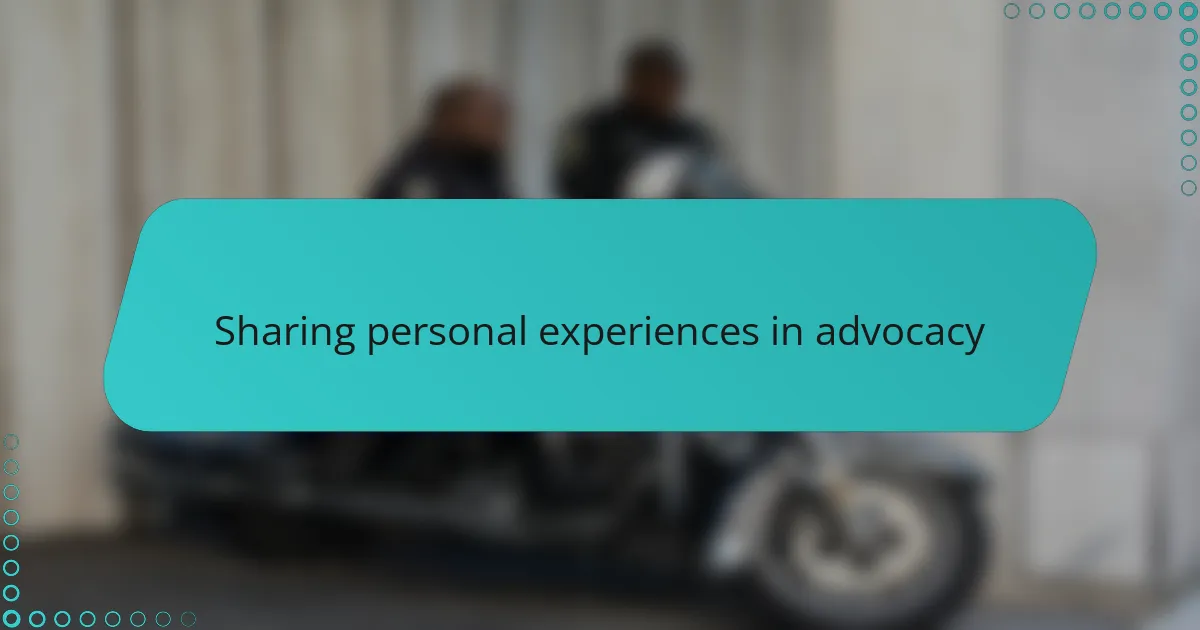
Sharing personal experiences in advocacy
When I first started sharing my own experiences in advocacy, I quickly realized how powerful personal stories can be. When I opened up about the challenges I faced and the small victories I celebrated, it helped others see that they were not alone in their struggles. Have you noticed how a relatable experience can turn abstract legal issues into something tangible and motivating?
One time, during a community meeting, I shared a story about navigating a difficult legal hurdle alongside grassroots activists. The room shifted—people became more engaged and hopeful because they heard a real example, not just theory. It made me think: isn’t advocacy strongest when it’s anchored in genuine human experiences?
I also find that sharing personal narratives builds trust with both activists and legal professionals. When I speak honestly about my doubts and learning moments, it creates a space where others feel comfortable to ask questions and share their stories. This reciprocal openness often sparks deeper collaboration and collective resilience. Have you ever felt that moment when a shared vulnerability becomes the foundation for stronger teamwork?
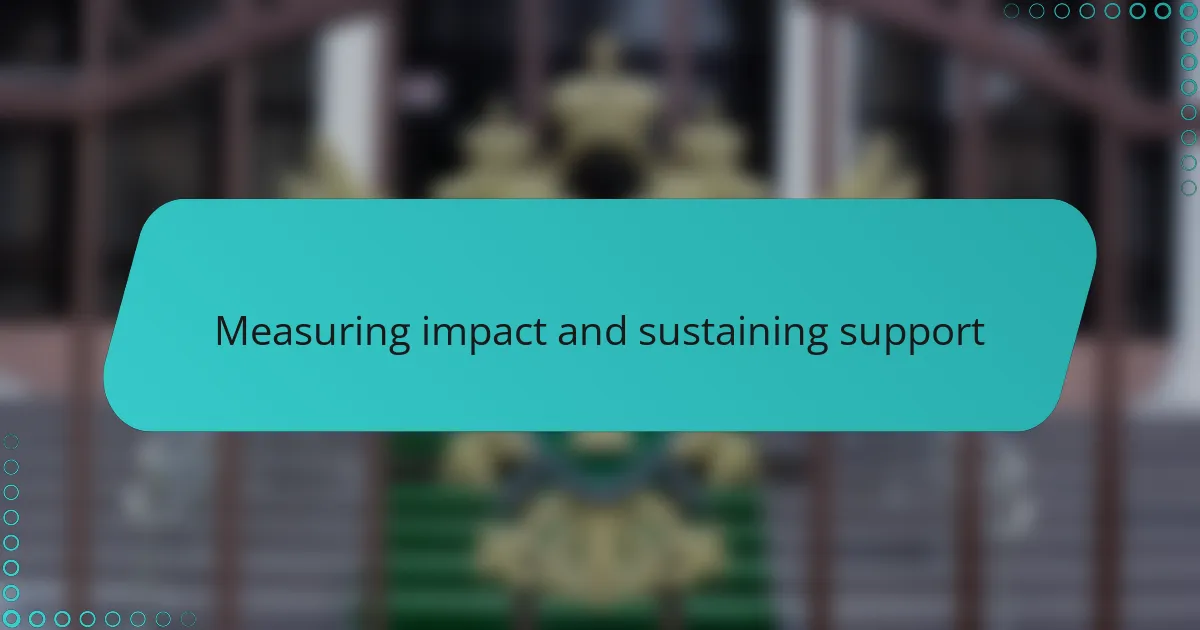
Measuring impact and sustaining support
Measuring impact can feel like trying to catch a shadow sometimes. I’ve seen movements pour their hearts into change yet struggle to pinpoint exactly what’s shifting legally or socially. How do you know if your efforts are moving the needle? For me, setting clear, achievable goals early on—whether it’s a policy revision or legal victory—makes tracking progress less abstract and more motivating.
Sustaining support is another puzzle that requires more than just enthusiasm. I’ve witnessed groups fizzle out when momentum waned or burnout hit hard. What I find essential is creating ongoing engagement—like regular updates, shared successes, and open channels for feedback—which keeps everyone connected and invested, even during slow seasons.
One story sticks with me: a grassroots coalition I advised used simple impact metrics combined with heartfelt storytelling to keep their donors and volunteers inspired. They didn’t just report numbers; they shared human experiences behind the facts. That blend of data and narrative? It became their secret weapon for long-term support and resilience. Have you tried balancing facts with feelings in your advocacy? It can truly change the game.
